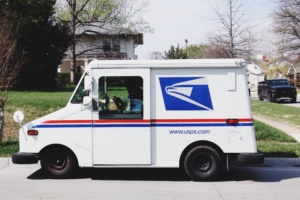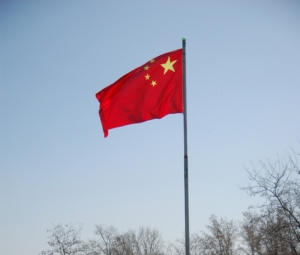UPS/Teamsters: Negotiations Have Begun!
We’re supplying you with the information you won’t find anywhere else!
In our last article, we reported that the Teamsters union had informed UPS Leadership that they were unwilling to kick-off National Negotiations that were planned for 04-17-23 until all Supplemental Negotiations were complete. At that point only 10 of the 40 Supplemental Agreements had been finalized.
According to internal Teamsters communications, “last week began with UPS refusing to make proposals, but ended with “panicked phone calls from company negotiators after the Teamsters announced there will be no national negotiations until supplements are resolved…” The internal communications went on to say that “The hardline approach pushed two supplements- The Michigan Rider, and the Local 243 and Metro Detroit Agreement- to reach full tentative agreements.” This still leaves 28 of the 40 Supplements open.
 So, we were interested to see if the Teamsters would show up in Washington, DC this past Monday. The company had released a statement on their website, indicating that they would be there as planned, and would be prepared to negotiate the National and Supplemental agreements at that point.
So, we were interested to see if the Teamsters would show up in Washington, DC this past Monday. The company had released a statement on their website, indicating that they would be there as planned, and would be prepared to negotiate the National and Supplemental agreements at that point.
On the positive side of things, the Teamsters National Negotiating Committee, including rank and file members and representatives of all supplemental negotiating committees, were present in Washington, DC on the 17th. However, the tone that they set might have had some UPS Leaders wishing that they had not.
According to the Teamsters, UPS provided it’s opening statement through a PowerPoint presentation, while they presented a video testimonial from members nationwide “sharing their trials and tribulations working at UPS”. This was an interesting approach as it personalized the impact of the main negotiables that the Teamsters are demanding.
Below is a list of the demands that the Teamsters are making, along with the message that the video attempted to deliver.
Wages– Teamster members are looking for improved wages, especially for Part Timers. Comments in the video from Teamster General President, Sean O’Brien, and General Secretary-Treasurer, Fred Zuckerman revolved around the increased profitability and stock price that the company has seen since the last contract negotiations in 2018 (both of which have doubled). Zuckerman commented that “Teamsters at UPS can’t just survive, they need to thrive, just like the company.”
22.4 Drivers- This is the two tiered Driver category that currently exists at UPS. 22.4 Drivers are paid much less, and don’t receive the same benefits as other UPS Drivers. Several 22.4 Drivers in the video expressed concern that they are being unfairly treated, and called for the elimination of this two tiered system.
Excessive Overtime- The video featured multiple Drivers complaining how they have been forced to work 6 days per week, and how this impacts their health and family life. One driver described how he has been forced to work 6 days per week since November of 2019. Some described it as “The Peak Season that never stopped”. The fact that UPS is still charging for Peak Surcharges suggests that this could be an accurate description.
Inward Facing Camera’s/ Harassment- Several UPS Drivers explained their opposition to the use of inward facing camera’s in their vehicles. They suggested that UPS already has significant technology in place that allows them to monitor their performance and activity including; GPS, Telematics, and their DIAD board. Some felt that using these cameras could be used improperly to harass drivers, and would be an invasion of privacy.
Workforce Investment- UPS employees stressed the need to create more Full Time jobs for Part Time workers. They also indicated that the company needs to contribute more to Pensions and to ensure Pension stability. Other employees stressed the need for the company to invest in ways to protect workers from extreme heat. One driver described how he had experienced Heat Stroke, which required a hospital visit.
PVD’s- Personal Vehicle Drivers– UPS employees described how the use of these drivers during peak season, takes work away from regular/ Teamster drivers. Some described situations in which there was not enough work for Regular drivers and they were sent home, while PVD’s were still working. They also suggested that PVD’s do sloppy work, and make the company and their drivers look bad.
Subcontracting- UPS Trailer drivers complained that the company is using more Subcontractors than they need to, and that work is being taken away from Teamster Drivers. They are calling for a reduction/ elimination of subcontractors for UPS Trailer moves.
Martin Luther King Day/ Juneteenth– Several UPS employees stressed that UPS should fully recognize these holidays by adding these as paid holidays for workers. Comments made from employees suggested that UPS is big on promoting diversity, but they need to put their money where their mouth is.

Obviously, all of these items would come at a cost to UPS, some of them being significant. UPS Leadership has indicated that the two sides are not far apart, and that an agreement should be easy to reach in advance of the July 31st deadline. So, it will be interesting to see how much the company is willing or able to give up.
At the opening of these negotiations, Teamster leadership suggested that there is little wiggle room from their perspective. President, Sean O’Brien stated “We don’t work for this company. We work for our members. It’s not Wall Street that concerns us, it’s Main Street. We are not going to negotiate a contract that is cost neutral or with concessions. We are going to push this company and its management harder than they’ve ever worked before, and for the first time you’re going to face a productivity standard. We have 12 weeks until this current contract expires. Let’s get to work.”
So, obviously there is a great deal of work to do in a short period of time. Therefore, it is imperative to monitor this situation for ongoing/ meaningful developments. As previously committed, ICC Logistics will continue to monitor this situation, and provide updates to ensure that our clients and followers are duly informed.












